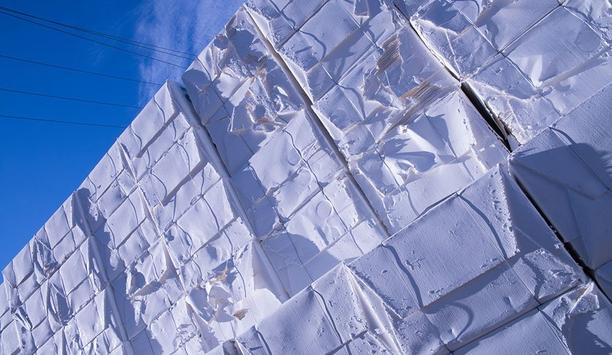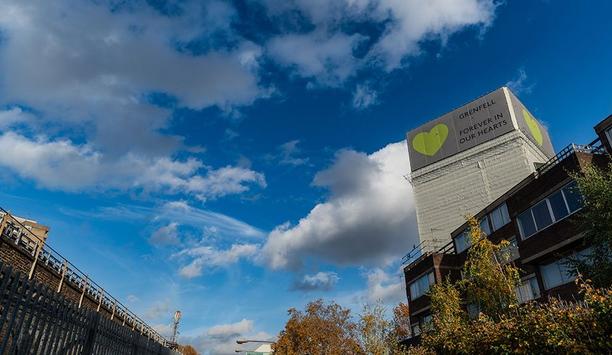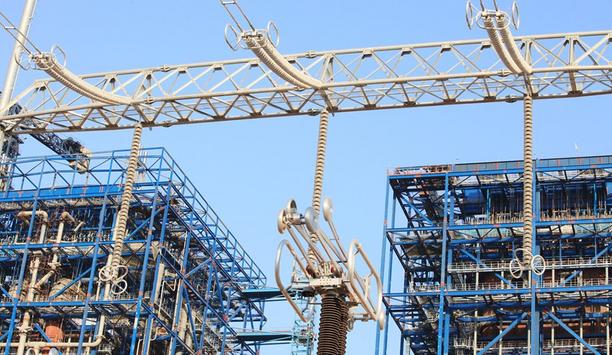Fire Suppression System Accessories News & Trends
To manage fire risks, there needs to be a shift away from detecting and responding to emergencies and instead, a look towards connected technologies to provide a pre-emptive, proactive approach. Fires can be highly devastating, putting people at risk and threatening the lives of the public in surrounding areas – not to mention how destructive they can be in terms of damage to materials and property. A connected approach Fortunately, right now, our world is more connected than ever befor...
While conducting research for my 2021 Wisconsin Public Safety Commission (WIPSCOM) conference presentation, it became immediately clear that securing the nation’s public safety answering points (PSAPs) is no longer just an IT challenge. Shifting from an analog to digital operating environment — the next generation of 911 — will require strategic investments into three key areas: people, processes and technology. As call center technology evolves nationwide, the need for greate...
As more and more countries in Europe and North America commit to net zero, a key strategy is replacing old fossil fuel-driven forms of power generation and replacing them with renewable energy, such as wind turbines and solar panels. The wind industry has seen a particular boom, with tens of thousands of new turbines installed every year across the globe. However, like any other heavy machinery, wind turbines can catch fire due to mechanical or electrical failures. These fires can have impacts...
There is a sense in some markets that the paper and pulp industry will decline owing to the digital technologies with which people interact every day. While this might be considered logical, the reality is completely different. In fact, the paper and pulp industry has experienced a steady growth and will continue to do so in 2021. Production of paper increased by more than 450% in the last decades and the demand of paperboard in the world is expected to grow significantly, driven by e-commerce...
Mathew Baxter is the Founder and CEO of the echelon group with responsibility for the management of echelon Consultancy, Pretium Frameworks and echelon Improvement Partnerships. Mathew has spent most of his working life in the construction sector. The devastating Grenfell Tower fire has prompted what the government has referred to as ‘the biggest change in building safety for a generation’. So what do the Building Safety and the Fire Safety Bills mean in terms of emergent legislatio...
On Wednesday 3rd March the UK Chancellor of the Exchequer, Rishi Sunak, delivered the Spring 2021 budget to the House of Commons. In this, Sunak outlined how the Government would be rebuilding the economy and continuing to financially support its citizens as the country gradually returned to a sense of normal after COVID-19 restrictions. Highly anticipated announcements Despite several leaks to the press, the Chancellor’s announcement was highly anticipated by many industries, businesse...
The risk of fire is thankfully not an immediate threat in most people’s everyday lives. But this has led to a nonchalant attitude where many fail to appreciate the true dangers posed by a fire situation. The pandemic has served to make matters even more complex, and has pushed fire safety on the back burner as facility managers (FMs) turn their attention to COVID-proofing the workplace. Safety at work is now more of a focus than it has ever been, but the race to ensure we can return to wo...
We at AEI Cables have sent out a message to the supply chain highlighting the need to use only approved cabling in critical signal and control equipment following the announcement of a revized version of the Code of Practice covering these areas of performance. In an open letter to customers, industry bodies and organizations, we are highlighting how the systems powered by these cables –including smoke and heat extraction systems–are critical in assisting fire services in the case o...
The Grenfell tragedy has shocked the public and rocked the construction industry. The ongoing inquiry into the 2017 tower block fire has exposed huge flaws in existing practices across architecture, material specification, and building projects. It is also reinforcing the critical importance of fire protection. It took Grenfell, and admittedly the many years that have followed, for the industry to fully reappraise the product selection and testing regimes needed to ensure resident safety in bui...
Businesses operating within the waste industry are susceptible to a wide range of fire risks. Storage of combustible materials, the ongoing use of industrial vehicles and waste’s natural ability to rise in temperature all add to these risks. The sector’s safety has improved over recent years, with the Environment Agency (EA) making Fire Prevention Plans (FPPs) mandatory for every waste and recycling site. However, there’s still a way to go to ensure maximum safety - and insurer...
Innovation in the fire protection industry can oftentimes be slow to move forward, particularly when compared to other similar industries. This is because legislation, regulation, and enforcement, while all necessary proponents within the sector, can often slow the tide of revolutionary ideas. However, the ability to innovate in this industry can quite literally be a matter of life and death. The developing intricacies of modern infrastructure and the demand for more sustainable solutions must...
There are many daily risks faced by buildings and their managers, with electrical fires being one of the most common and dangerous. Commercial fires impact occupant health, property and the business itself – with 25% of businesses who suffer a fire never reopening. Given the often-unpredictable nature of electrical fires, businesses must invest in the latest technologies to prevent irreparable damage. It is the responsibility of the consultant engineer to show le...
During these challenging times, it is more important than ever to protect the supply chain of food, including supermarkets and convenience stores in cities around the world. On average 3,740 fires occur in food and groceries stores in the US annually, including supermarkets and convenience stores, according to a report published by the NFPA (National Fire Protection Association). Structure fires in mercantile properties were responsible for the loss of 12 lives and more than $600 million indir...
The fire industry has made it absolutely clear, led by authorized bodies including the BAFE Fire Safety Register, that the current pandemic does not remove the need to comply with any fire safety requirements under the Building Regulations. As we now look beyond the lockdown period, John Allam, Operations Director at Amthal Fire and Security reviews the raft of new proposals demonstrating the Government and industry’s commitment to compliant fire safety and new immediate demands placed on...
New government legislation due to come into force in the United Kingdom on July 1st will require electrical installations in privately rented properties to be tested and inspected at least once every 5 years. The Electrical Safety Standards in the Private Rented Sector Regulations (2020) will require landlords to enlist qualified electricians to complete inspections and provide certification to tenants – or face fines of up to £30,000. While the risk of fire can never be entire...
There have been challenges with completing fire safety maintenance and installation projects during the current Covid-19 crisis, most notably as a result of the difficulties for installers in safely accessing sites. Many construction projects halted for lockdown and this resulted in approximately 50% of the British installers we work with having to furlough staff. The challenges, however, are not just restricted to the UK. With Kentec panels sold in more than 90 countries across the world, we ha...
The original fire suppression agent has always been, of course, water. In the age of sail, it was ideal. Not so with the advent of the combustion engine, however. When applied to burning petroleum, the fire spreads. It also simply destroys electronics. Carbon dioxide (CO2) and Halon derivatives were the first widely used commercial fire suppression solutions, gaining popularity in the 1950s and '60s. Unlike water, they were highly effective, electrically non-conductive and didn't leave any resi...
Products for electrical systems that are installed into modern, complex buildings have to be fit-for-purpose for today’s challenging demands. With the background of numerous incidents still being felt by the fire performance industry, how is it to set the benchmarks for the future to make sure there is never another Lakanal House or another Grenfell? The long-term answer is for clearer guidance and legislation, if necessary, to enable the whole supply chain to make decisions which are com...
While whole room protection – sprinklers or gas systems – is a common choice, there is an argument for thinking smaller; taking fire detection and suppression down to the equipment, enclosures and even the components where a fire is most likely to start. Traditional Fire Suppression Methods A traditional water-based sprinkler system is the most common form of fire protection found in commercial and industrial buildings. They offer reasonable cost, large area protection for entire f...
The era of “smart buildings” is here, bringing new opportunities for significant gains in efficiency, safety and environmental protection. In an interview, Rodger Reiswig, director of industry relations at Johnson Controls Global Fire Protection Products, offers his insights into the impact of smart buildings on fire detection and what it means for organisations planning new facilities. Q: How do you define smart buildings? The term “smart buildings” means different thi...
Interconnected smoke alarms provide an earlier warning and the best chance of escape In this article, Neil Perdell, National Technical Manager at Aico Ltd., suggests some crucial and simple steps to consider before deciding on a smoke alarm. Making a case for wireless smoke alarm systems, he also lists the key characteristics that one must consider when selecting such a system for installation. Wireless smoke alarm systems - key characteristics In today’s highly compe...
Browse fire protection news
The New Future For Fire Agencies
DownloadThe Eight Key Trends in Fire Detection in 2023
DownloadA Digital Platform to Improve Fire Safety Compliance and Inspections
DownloadOvercoming the Challenges of Fire Safety in the Paper Industry
DownloadCarbon Monoxide: Creeping Killer Caught In The Act
Download
























